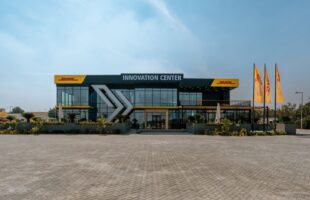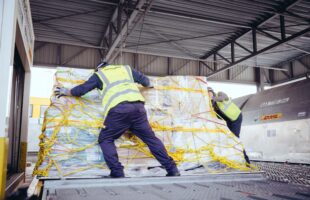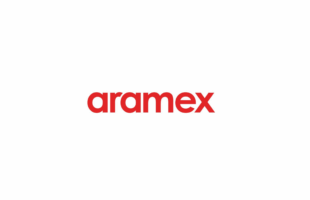 The early expansion of the hub reflects both the meteoric growth of the express logistics market in both China and the intra-Asian markets, as well as the continuing importance of HongKong as an international cargo hub.
The early expansion of the hub reflects both the meteoric growth of the express logistics market in both China and the intra-Asian markets, as well as the continuing importance of HongKong as an international cargo hub.
“The Central Asia Hub expansion is really a story of growth,” said Dan McHugh, chief executive officer, DHL Express Asia Pacific. “It reflects the importance of Hong Kong, the importance of China and also DHL’s global footprint.” he said.
Although airports in the Pearl River Delta have rapidly developed and provide modern equipment and facilities, they cannot compete with Hong Kong’s connectivity provided by 80 airlines and efficient ground-air network.
Hong Kong is still the gateway to the fast-growing Chinese market and is also within a four hour flight of all major Asian cities, added Jerry Hsu, president, Greater China, of DHL Express.
DHL estimates that at least 15 to 20 years is needed before China’s groundair networks will catch up to the level ofHong Kong’s.
Pledges of gov’t support

Speaking at the opening ceremony for the hub last month, Eva Cheng, Hong Kong’s Secretary for Transport and Housing told reporters that DHL’s continued investment in Hong Kong shows the territory’s ongoing importance and continuing growth as a logistics centre.
Cheng pledged further support to the development of the express cargo industry and the air industry in general by “improving our airport’s links to the nearby markets.”
“On the airport itself, we have plans to increase the runway capacity gradually, reaching 58 movements per hour next year and 68 movements per hour by 2015. This is, of course, not the end game. The runway capacity could be substantially increased to over 100 movements per hour with the addition of a third runway,” she said.
The requirement for a third runway could come sooner than expected if growth rates remain in the double digits.
“We estimate that one-third of global express volumes will be in Asia-Pacific, and that’s why we have expanded our hub in Hong Kong and will build one in Shanghai,” McHugh said. The North Asia hub in Shanghai is scheduled for openingin 2010.
DHL said the establishment of the NAH will result in transit time improvements across North Asia and, in particular, benefit customers located in the Yangtze River Delta. Currently almost 50 per cent of the shipments through the Central Asia Hub are destined for China, Japan, Korea and Taiwan.
“With the expected long-term projections in volume growth, a dedicated North Asia Hub will further enhance operational efficiencies and enable DHL to keep pace with growth,” said Hsu.
In particular, DHL, like its competitors is banking on the massive growth potential of mainland China. “We see in China a domestic opportunity that will rival domestic markets in the US and Europe,” McHugh said.
“Asia Pacific continues to be a key growth driver – in the first half of 2008, we grew 13 per cent year-on-year. The expansion of the CAH is a testament to the continued growth of intra-Asia trade and the Asia-Europe trade lane,” McHugh said.
Currently, over 60 per cent of express cargo processed by the Central Asia Hub is intra-Asia Pacific shipments, a figure DHL expects to continue growing alongside rising intra-regional trade.
The strong growth in the Asian express market – where DHL says it has a 40 per cent market share – enables it to “take advantage of high growth markets while not being impacted by economic downturns elsewhere,” McHugh added in reference to the lethargic US economy.
US$210 million facility
The Central Asia Hub expansion was completed with an additional investment of US$110 million, bringing the total cost of the facility to $210 million. This brings DHL’s investment in Asia to nearly US$2.2 billion.
The expansion doubled the hub’s size from 18,200 to 35,000 sq metres (the size of nearly 120 tennis courts), giving DHL the ability to move 75,000 pieces per hour, more than doubling the original capacity of the hub.
With a state-of-the-art automation, the throughput cycle time has been further reduced from 12 minutes to just 7 minutes. The facility is expected to handle about 40 million shipments per year.
The increased throughput of the automated CAH is made possible because of an advanced Autosort system which can handle 35,000 conveyable shipments and40,000 flyers per hour.









